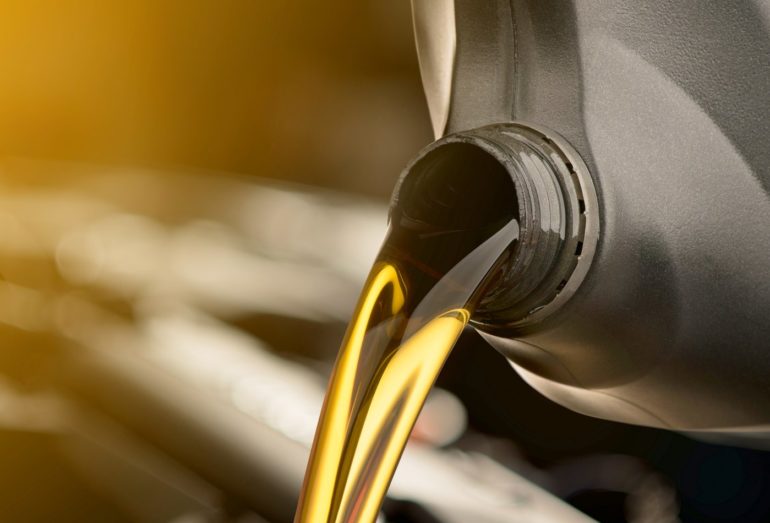What kind of fluid is your car leaking?
If you have just discovered that there’s a puddle under your car, you may be wondering if you should start panicking now.
Well, don’t panic. There are some simple ways that you should be able to tell what’s leaking.
Fluid dynamics
There’s nothing quite like that feeling when you walk out to the garage and see a puddle under your car. Your heart starts beating a little faster, you start to wonder what could possibly be wrong with your daily driver, and have visions of your wallet catching on fire.
Before the adrenalin starts pumping madly — and before you go to the shop — it’s a good idea to know exactly what your car just peed on the ground.
This is not only for your peace of mind and knowledge, but also so you can tell the shop exactly what your car is leaking, which will save them time and you money.
What kind of fluid is your car leaking?
The good news is you don’t need any fancy equipment to figure out what that puddle is — just your eyes, nose, and sense of touch. (Yes, you will have to get your fingers a bit dirty sometimes to be sure, but that’s why soap was invented.)

Let’s take a look at what your car is leaking, dropping or dribbling.
Engine oil: Oil leaks are the most common thing you’re going to find under the front of your car. They’ll appear very dark brown to black, will be very slippery, and smell a bit like burnt gas.
The most common leak points are the oil pan or oil pan plug (at the bottom of the engine), the valve cover(s) (at the top of the engine), or the oil filter (location varies).
Transmission fluid: This stuff is generally dark red in color (possibly black/brown if it’s very old/dirty), just as slippery as oil, and has a bit of a petroleum smell to it. If it’s brown or black, it will smell like something burnt. You’ll find this pretty much centered under the car, towards the front.
Power steering fluid: Power steering fluid is a medium brownish liquid, a bit slippery and lighter than engine oil. You’ll find it near the power steering pump, the reservoir for it, and the steering rack. Note: some cars use transmission fluid as power steering fluid, so check your manual.
Brake fluid: See power steering fluid above. Brake fluid tends to be a bit lighter in color, more yellow-ish than brown-ish — though there are some variants that are blue. If you suspect your car is leaking brake fluid, get to a mechanic immediately. This could be horribly dangerous.
Windshield washer fluid: This stuff comes in every color of the rainbow, but it’s often blue. It feels just like water and doesn’t really smell like anything much. You’ll find it near the windshield washer reservoir and the hoses that feed it to the base of the windshield.
Antifreeze: Antifreeze – sometimes referred to as coolant – is usually bright green, though it can be red as well. It will be slippery on your fingers, a bit thicker than water, and will have a distinctive sweet smell.
Look for this coming from your radiator (the thing with fins at the front of the hood), the radiator hoses (top or bottom), or the water pump (location varies).

Fuel: You should be able to tell this one by scent alone — if you don’t know what fuel smells like, take a big whiff the next time you’re filling up your car. Fuel leaks can be very dangerous — obviously gas is highly flammable and the fumes are actually explosive. Usually, you’ll see leaks around the filler neck (where you put gas in the car), but can also leak from the fuel lines that run from the gas tank up to the engine.
Rear differential oil: Found on rear-wheel drive and four-wheel drive/all-wheel drive vehicles only. If you don’t know if this applies to you, read the manual. This stuff is thick, black, and smells (to most people) absolutely horrible. Look under the rear of your car for a round-ish thing the size of a soccer ball — that’s your rear differential, and that’s where you’d find this stuff.
Water condensation: When running the air conditioning, it’s not uncommon for your car to leave a puddle of plain old water on the ground after you turn it off. This is perfectly normal and not a leak — just condensation dripping off of the A/C condenser.
Parting thoughts
Make sure to wash your hands after dipping your fingers in whatever it is you’re checking out. Though none of this stuff will likely hurt you from just getting on your hands, you don’t want to accidentally ingest or rub it into your eyes.
If, after checking, you’re still not sure, ask a knowledgeable friend to check it out, or scoop a little up if you can and take it to your mechanic. They should be able to tell you what it is right away — and what you need to do about it, too.







